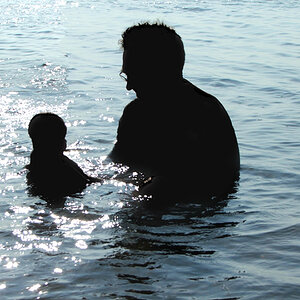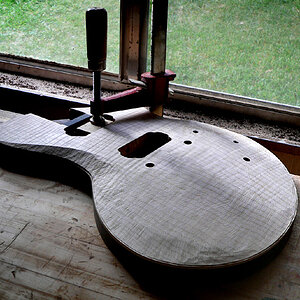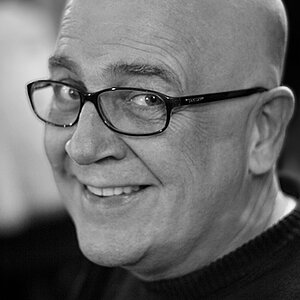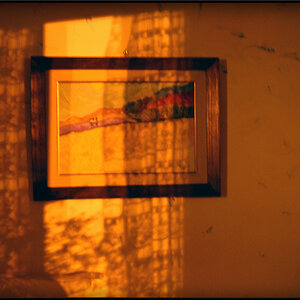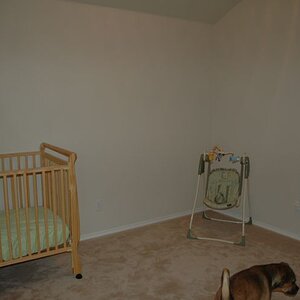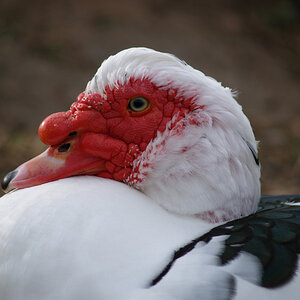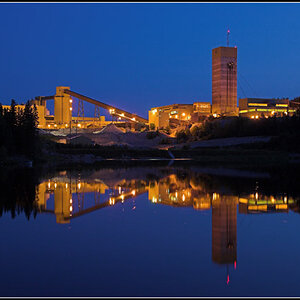I have a Canon 60D and take pictures of my son's soccer games. I have the camera in action mode with the continuous picture option on. I normally never have any issues except for the occasional blurry picture but over the last two games, over half of the pictures I take (normally about 1000), are either completely or partially out of focus. I am a camera novice so not sure if it is something with the camera settings or with me. I do notice that when I hold down the button to take pictures, it is slower than normal taking multiple pictures than normal. Hopefully someone can help me.
Navigation
Install the app
How to install the app on iOS
Follow along with the video below to see how to install our site as a web app on your home screen.

Note: This feature currently requires accessing the site using the built-in Safari browser.
More options
You are using an out of date browser. It may not display this or other websites correctly.
You should upgrade or use an alternative browser.
You should upgrade or use an alternative browser.
Blurry action photos - Need help Please
- Thread starter smcgee
- Start date
CanonJim
TPF Noob!
- Joined
- Aug 12, 2012
- Messages
- 123
- Reaction score
- 15
- Location
- Western south Jersey, USA
- Can others edit my Photos
- Photos NOT OK to edit
It's difficult to pinpoint exactly what the problem is, but you speak of the slower-than-normal burst rate - this MAY be due to either a low-charge battery, or some change in the type of shots being saved. For example, if you go from Medium Size JPG to RAW, this bump in file size will often make the FPS drop a bit. Check to make sure that the file type you want is appropriate - If I were doing fast action shots, I'd probably use medium or even small JPG.
As far as the out of focus issue, that may be due to a change in the focus points, or the AF mechanism.
You should be in AI Servo mode, and use the Center focus point, with an aperture of f/8 or one stop either way. This will probably give you the best chance of getting the shot.
Let us know how things turn out.
As far as the out of focus issue, that may be due to a change in the focus points, or the AF mechanism.
You should be in AI Servo mode, and use the Center focus point, with an aperture of f/8 or one stop either way. This will probably give you the best chance of getting the shot.
Let us know how things turn out.
goodguy
Been spending a lot of time on here!
- Joined
- Dec 5, 2012
- Messages
- 5,555
- Reaction score
- 1,121
- Location
- Toronto Canada
- Can others edit my Photos
- Photos OK to edit
Also if the lighting conditions has changed that can make a world of difference.
Is the field well lite ?
Or are the lighting conditions poor ?
If there isnt enough light your shutter speed will be slower and the action will have a smeered effect.
Is the field well lite ?
Or are the lighting conditions poor ?
If there isnt enough light your shutter speed will be slower and the action will have a smeered effect.
- Joined
- Jul 8, 2005
- Messages
- 45,747
- Reaction score
- 14,806
- Location
- Victoria, BC
- Website
- www.johnsphotography.ca
- Can others edit my Photos
- Photos OK to edit
Are they out of focus, or blurred from motion? Without knowing anything about the situation, my first guess might be that your shutter speed dropped below the point where you could properly hand-hold (especially important with longer glass, remember SS=1/FL as a good guideline) the camera. Most sports venues are very dimly lit ('though they may seem bright to us). It would help if you posted an image or two as an example for us to look at.
- Joined
- Mar 24, 2013
- Messages
- 8,797
- Reaction score
- 4,893
- Location
- Connecticut
- Can others edit my Photos
- Photos NOT OK to edit
If your using continues shooting, check to see if you changed the continues frames per second. High speed is 5.3 and low is around 3. Use the Al Servo and center point. I would also suggest to use shutter priority and set shutter speed accordingly to the action. The sooner you move away from full auto the better off you will be.
- Joined
- Dec 16, 2003
- Messages
- 33,896
- Reaction score
- 1,853
- Location
- Edmonton
- Website
- www.mikehodson.ca
- Can others edit my Photos
- Photos NOT OK to edit
Yes, we would have to see some examples (along with settings) to really judge.
But my innitial guess would be that as the sun goes down earlier every day, you are shooting in less light that you were previously. That lower amount of light will mean that the camera is giving you slower and slower shutter speeds...and the slower the shutter speed, the harder it is to freeze motion.
The solution is to raise your ISO, rather than have the camera give you a slower shutter speed. I would recommend that you actually learn about the settings on your camera and don't just rely on the 'picture mode' settings like action/sports mode.
Also, at some point (as it gets darker and darker) you just have to realize that you will reach the limit of what you can do with your gear. The next option may be to buy a lens that has a larger maximum aperture, but they don't come cheap...especially for a telephoto lens that you would probably want. Shooting sports is one of the most demanding things for photo equipment, the average pro sports photographer is probably using $15000 worth of gear.
Also, I'm a little curious as to why you are shooting 1000 photos each game. Are you shooting these for someone, or just for your own personal use/pleasure?
It's not really a bad thing, it is digital after all....but what is your keeper rate (besides the recent blurriness issue)? I'm imagining how much time it must take, just to go through the images and look for good ones....is it really worth it? I learned to shoot with film, so maybe I'm just 'old school', but I'd suggest trying to be more patient and try to anticipate the action more, and thus shoot less.
But my innitial guess would be that as the sun goes down earlier every day, you are shooting in less light that you were previously. That lower amount of light will mean that the camera is giving you slower and slower shutter speeds...and the slower the shutter speed, the harder it is to freeze motion.
The solution is to raise your ISO, rather than have the camera give you a slower shutter speed. I would recommend that you actually learn about the settings on your camera and don't just rely on the 'picture mode' settings like action/sports mode.
Also, at some point (as it gets darker and darker) you just have to realize that you will reach the limit of what you can do with your gear. The next option may be to buy a lens that has a larger maximum aperture, but they don't come cheap...especially for a telephoto lens that you would probably want. Shooting sports is one of the most demanding things for photo equipment, the average pro sports photographer is probably using $15000 worth of gear.
Also, I'm a little curious as to why you are shooting 1000 photos each game. Are you shooting these for someone, or just for your own personal use/pleasure?
It's not really a bad thing, it is digital after all....but what is your keeper rate (besides the recent blurriness issue)? I'm imagining how much time it must take, just to go through the images and look for good ones....is it really worth it? I learned to shoot with film, so maybe I'm just 'old school', but I'd suggest trying to be more patient and try to anticipate the action more, and thus shoot less.
Last edited:
TCampbell
Been spending a lot of time on here!
- Joined
- Mar 31, 2012
- Messages
- 3,614
- Reaction score
- 1,556
- Location
- Dearborn, MI
- Can others edit my Photos
- Photos OK to edit
I have a Canon 60D and take pictures of my son's soccer games. I have the camera in action mode with the continuous picture option on. I normally never have any issues except for the occasional blurry picture but over the last two games, over half of the pictures I take (normally about 1000), are either completely or partially out of focus. I am a camera novice so not sure if it is something with the camera settings or with me. I do notice that when I hold down the button to take pictures, it is slower than normal taking multiple pictures than normal. Hopefully someone can help me.
When you say "continuous picture" are you referring to live view mode? E.g. are you looking at the LCD screen on the back to shoot rather than looking through the viewfinder?
If so, then that's a very big part of why you're getting blurred results. Here's why:
The camera has two different focusing systems. The primary focusing system for a DSLR is the "phase-detect auto-focus" system. But it has an alternative system that it uses in live-view mode called "contrast-detect auto-focus".
Phase-detect sends light through prisms which splits the image along a line (you can't see this happening). Imagine taking a pair of scissors and cutting a photograph and then not quite matching up the two halves of the photo along the cut. As the camera focuses, the two "halves" will slide along that "cut" until they align. When the two halves are aligned the camera is focused.
But more than this... because of the way the system works, the camera can actually evaluate ALL NINE of your focus sensors at the same time and can tell which focus sensor can lock focus on the nearest target (only used if you allow the camera to auto-select focus points rather than using a single specific point) and can also tell if the subject is nearer or farther than the focused distance AND... can EVEN tell how far. So the camera knows exactly how much it needs to adjust focus and in which direction in order to achieve focus. As long as there's adequate light, the camera doesn't actually have to "hunt" for focus... it just snaps right to the focused distance immediately.
In sports mode (AI Servo), it uses "predictive" focus... meaning it analyzes the focus distance each time it has to adjust focus on a moving subject which allows it to determine if the subject is getting nearer or farther and how fast. The camera factors this information in as it adjusts focus by "predicting" what the new focus distance is likely to be as it follows them.
You can see the phase-detect system has a LOT of benefits going for it: It's fast. It knows which focus point can lock focus even when everything is out of focus. It knows which way to focus and how far. It can use "predictive" focus to figure out where the subject is likely to be next. What's not to like?
Well... in order to do this, the focus system can't be on the sensor itself. The camera has to use dedicated focusing sensors. Those sensors are on the floor of the camera. The reflex mirror inside your camera (which bounces light up into the viewfinder so you can look through the lens) has a few semi-silvered spots which let light pass through onto tiny mirrors that bounce light down into the phase-detect auto-focus sensors in the floor of the camera. But to do this, the mirror has to be down.
When you use "live view", the light has to pass all the way through to the camera's imaging sensor and THAT means the reflex mirror has to swing UP. No mirror... no ability to bounce light down into the phase-detect auto-focus sensors. That means the camera cannot use this focusing system when you shoot in "live view" mode.
So the "other" focusing system is called "contrast detect" auto-focus. This is what most point & shoot cameras use. There are no dedicated focusing sensors. This system analyzes the image looking for "edges" and then adjusts focus until it can maximize the contrast along those key edges.
It's probably easier to visualize how this works by thinking of a barcode. If you think about it, a barcode is basically a white background with some solid black stripes on it. Every point on the barcode pattern is either "black" or "white". There is no gray. If you were zoomed in very tight with a magnifying loupe looking at the barcode you'd see many "black" pixels and as you transition off a stripe and onto the white background the pixels would suddenly just switch to "white".
But imagine that you de-focus the camera a bit... now you've got a bunch of fuzzy stripes instead of nice sharp stripes. If you looked at that image under a magnifier, you'd see black pixels gradually transitioning to gray pixels which then gradually transition to white pixels as you move from the "stripe" to the "background" on the barcode. That's because the barcode isn't focused.
The camera knows that if it is focused nicely, it will get an abrupt transition from one color pattern (of the foreground subject) to a very different color of the background subject. It refers to this as "contrast". When it can maximize the difference between adjacent pixels along an edge then it has achieved focus at that point.
The downside of contrast-detection is that it requires a lot more analysis to work. Also... if the camera is out of focus, it doesn't actually know if it's focused too close or too far. It has to "hunt" and test the image to see if it's getting better or worse (remember... phase-detect focus doesn't have to hunt... it knows which way to go).
Contrast-detect focusing is typically a very slow system (much much slower than phase-detect systems.) The camera can do it faster if it has a faster CPU... but then that eats through the batteries a lot quicker (which reminds me... using "live view" in general eats through your batteries a LOT faster.)
When this phase-detect system, the speed of focus is mostly just limited to how fast the focus motors in the lens can turn and lock focus. With a contrast detect system the camera has to hunt around and do a lot of analysis.
Turn off "live view" mode and put the camera to your eye to frame and shoot. You'll get MUCH better results.
There is one last point... the lens selection can make a difference. Lenses with "USM" focusing motors (Canon's "UltraSonic Motor") are much faster at focusing (the motors are physically faster/snappier and also quieter (not that quiet is a big deal at a noisy sports game, but there are places where the photographer wants the camera to be quiet). Some lenses have focus motors that aren't particularly fast or snappy and may not be able to keep up with rapidly changing focus distances.
Thanks everyone! When I get back home tonight, I will upload some of the images so you can see what I am talking about. My son plays soccer for USNA and I take a lot of pictures and later send out to all the parents. Most of them don't get to the games so it's good to be able to see them, especially the plebes. I will say it doesn't seem to happen as bad during day games but I have tried to change the default mode to florescent lighting but that doesn't seem to make a difference.
- Joined
- Dec 16, 2003
- Messages
- 33,896
- Reaction score
- 1,853
- Location
- Edmonton
- Website
- www.mikehodson.ca
- Can others edit my Photos
- Photos NOT OK to edit
This starts to confirm my theory that a lack of light is causing slower shutter speeds (for evening games).I will say it doesn't seem to happen as bad during day games
That is your WB (white balance) setting and has nothing to do with blurry photos.I have tried to change the default mode to florescent lighting but that doesn't seem to make a difference.
I think that the most beneficial thing for you at this point, would be some education on how your camera works and how you can control it to get what you want. Learn about exposure; shutter speed, aperture and ISO. Learn what they do, how to change them and how they work together to create your photo.
It may not solve your problem, but it would certainly help you to understand problems when you have them...which would in turn help you to find the best options or solutions.
There are many good books and sites to read, but I think the best option would be to find a class on basic/DSLR photography.
- Joined
- Dec 11, 2006
- Messages
- 18,743
- Reaction score
- 8,047
- Location
- Mid-Atlantic US
- Website
- www.lewlortonphoto.com
- Can others edit my Photos
- Photos NOT OK to edit
what lens are you using?
I am trying to upload some of the pictures but it says they are too large. Again, I am a novice and not sure how to make them any smaller. Here are the links to a couple of the games where some of the pictures are great and some are not. The outdoor settings were about the same. The quality on my settings is jpeg L.
https://plus.google.com/photos/105713498274733848688/albums/5934241250750438801
https://plus.google.com/photos/105713498274733848688/albums/5937332584298996209
https://plus.google.com/photos/105713498274733848688/albums/5934241250750438801
https://plus.google.com/photos/105713498274733848688/albums/5937332584298996209
- Joined
- Dec 11, 2006
- Messages
- 18,743
- Reaction score
- 8,047
- Location
- Mid-Atlantic US
- Website
- www.lewlortonphoto.com
- Can others edit my Photos
- Photos NOT OK to edit
You need a bit of tutoring on camera stuff
I live near you - in Columbia
If you want to get together for an hour or so, I can walk you through how to make your pictures better.
Just PM me.
Lew Lorton Photography | Crossover Soccer - May 18, 2013
I live near you - in Columbia
If you want to get together for an hour or so, I can walk you through how to make your pictures better.
Just PM me.
Lew Lorton Photography | Crossover Soccer - May 18, 2013
Similar threads
- Replies
- 9
- Views
- 356
- Replies
- 16
- Views
- 1K
- Replies
- 13
- Views
- 401

